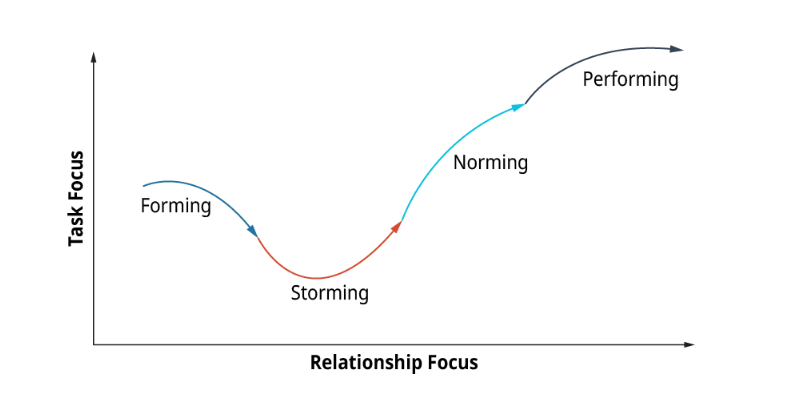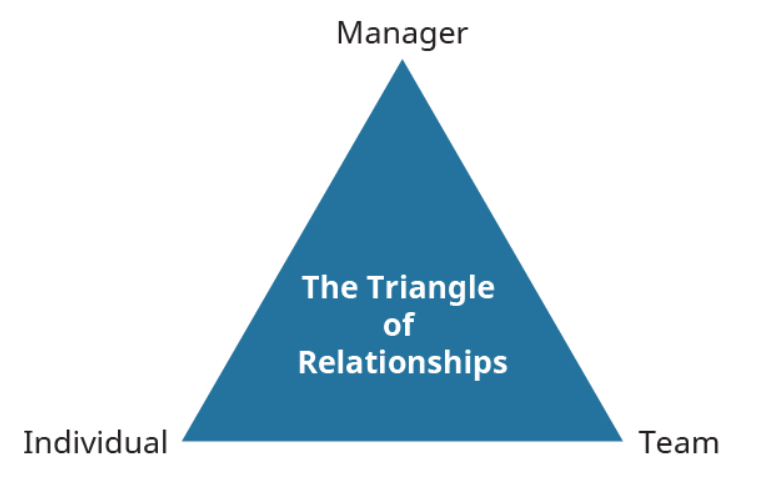9.5 Teamwork in the Workplace
When looking at some common features of teamwork within organizations, the more specific roles of a manager within an organization can be examined. Managers within team structures take on the roles of:
- team leader
- network facilitators
- team member
- external coach
These teamwork roles are very important to the success of an organization, so important that an Ipsos-Reid poll stated back in 2003, that 86% of Canadian business executives claim that teamwork is “very critical” to the overall success of their organization[13]. When focusing on teamwork in the workplace, it is important to know how teams do the work within an organization. According to Conger, Finegold, and Lawler, teams that perform their tasks efficiently, satisfy their members (stakeholders), and remain viable for future projects are seen as effective teams[14]. Competent teams are able to successfully harness the member inputs presented, and produce a completion of desired outcomes.
Team inputs are both physical and emotion tools used by members to complete tasks within an organization. Inputs include resources, nature of the work, team members, personal skills, and member characteristics. Hackman outlines how team inputs are implemented within an organization, which lead to organizational success[15].
How do teams eventually form and become effective? Essentially, it happens in stages according to educational psychologist, Bruce Tuckman, who developed the Tuckman Stages of Group Development. This model outlines five stages of team development[16]:
- forming
- storming
- norming
- performing
- adjourning
Figure 2 shows the stages using the axis of relationship focus and task focus. The fifth stage of adjourning is omitted as it explains the disbanding of the team once the project is completed[14].

In this process, team members get together and share personal goals about the project, leading to collective goals and ground rules set for the guidelines for their team. This is the forming stage, and is the move from an individual framework to a collaborative framework. Next, there is storming, when members try to avoid group-think or one individual’s control on the group. Teams may experience trouble through balancing organizational and emotional factors as the storming process can be a tempestuous process, depending on the direction the group takes. It can be disorienting, moving away from personal convictions and towards a cohesive nature. At times, there may need to be a time to take focus away from the organizational factors, until the team is a cohesive unit.
Once the team is completely clear on the objectives and have established comfortable emotional factors with members, it is time to begin to develop close relationships, and focus on completing organizational tasks during the norming stage. The next stage is the performing stage, where group members are working most effectively to get the tasks completed. This is when teams are most effective and highest performing. The final stage is adjourning., when members disband to focus back on individual factors, or certain members leave.
Most groups who go through this stage, engage in a learning curve, when their task focus takes a hit, but ultimately, it is beneficial for this to happen in the beginning. This produces a better relationship, as a positive relationship will help the team achieve the tasks in a more effective way. Teamwork is about balancing the dynamic of emotional relationships with organizational tasks.
With relationship factors playing an equally important role in building effective teams, the role of a leader or manager within the framework of relationship identity with organizational teams comes into question. When managing teams, the leader must create a boundary dynamic that can be fostering and concise with all members. The boundary dynamic is a delicate boundary between strategy, stakeholder, management, and organizational management[17]. The most precise example of this is the leader or manager relationship with a team. Managers must equally carry relationships with the team, and with each individual, when problems arise. Figure 3 outlines a triangle of relationships and responsibility for managers and leaders within a team dynamic.

Dynamicism and Interdisciplinary Teams
Within a modern workplace the need for ever growing and dynamic teams are needed, in addition, teams that are able to work in interdisciplinary ways to cross inter-organizational boundaries. Mathieu, Tannenbaum, Donsbach, and Alliger suggest that team dynamics change over time and conclude that compositional effects and changing dynamics offers promise for advancement[18]. Manning suggests that teamwork across organizational boundaries can produce results to complex issues, and that the need to manage across organizational lines is vital[19].
Dynamicism and interdisciplinary teams can be vital for the success of a modern workplace, through a variance of team characteristics[20]. As leaders we must be aware of our roles and contribution to the dynamic and changing landscape of the organization, especially in the effect of advancing learning.
Review Questions:
- What are the roles a manager takes on within a team structure?
- What are the five stages of Tuckman’s Model of Team Development?
- Describe the delicate boundary in which a leader or manager is involved within a team? What three areas do they have to manage?
A delicate boundary between strategy, stakeholder management, and organizational management

